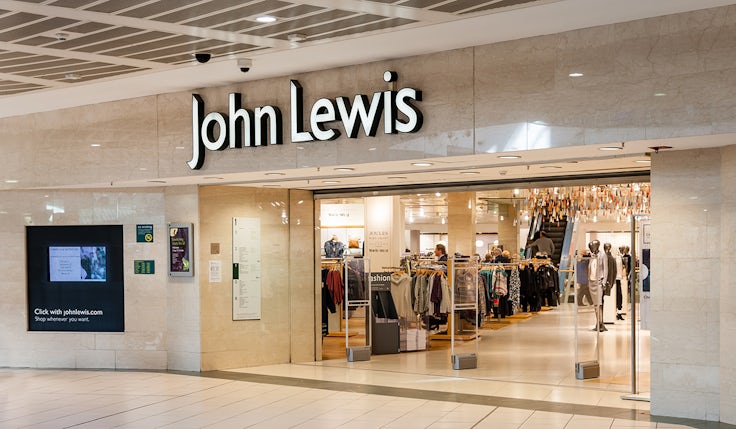Why the brand that saved Christmas lost some of its sparkle
After John Lewis revealed last week it would be parting ways with long-term agency partner adam&eveDDB, System1’s Jon Evans looks at what the retailer’s new agency can learn from the successes and failures of more than a decade of festive ads.
 Do you remember what Christmas ads were like before John Lewis? You probably don’t – because before John Lewis Christmas ads weren’t made to be remembered. The festive season was a time for sales, and selling is what the Christmas ads did. They were like watching a catalogue come to life – not the Christmas magic anyone was looking for.
Do you remember what Christmas ads were like before John Lewis? You probably don’t – because before John Lewis Christmas ads weren’t made to be remembered. The festive season was a time for sales, and selling is what the Christmas ads did. They were like watching a catalogue come to life – not the Christmas magic anyone was looking for.
And then everything changed, thanks to a premium retail brand and its visionary agency, adam&eveDDB. The strategy for John Lewis was beautifully simple – thoughtful gifting with each year’s festive ad telling the story of the gift.
While the strategy was simple, the execution was wonderfully rich. Sometimes people loved the ads, sometimes only liked them. But before long John Lewis was achieving something no brand had managed since the heyday of the Gold Blend couple or Renault’s Papa and Nicole. The audience anticipated each new John Lewis execution. To make a classic ad is hard enough. To make your ad a national event, and to do it every year even harder.
But now the partnership between John Lewis and adam&eveDDB is ending. It’s been an extraordinary run, and – to draw inspiration from one of those Christmas ads – this feels like Elton John taking leave of Bernie Taupin.
System1 has been measuring John Lewis Christmas ads since before the Test Your Ad database even existed in its current form. We thought we’d open up the John Lewis file and take a look at how those classic Christmas ads performed with the public. Here are three ways John Lewis won Christmas and two ways it lost it.
1. John Lewis owned the conversation
Our database – covering more than a decade of John Lewis ads reveals some standout 5-star results, including 2014’s ‘Monty the Penguin’ and 2019’s ‘Excitable Edgar’, with the latter being the highest scoring Christmas ad ever at 5.9 Star.
However other years didn’t always hit the same dizzy heights. That’s because every John Lewis ad introduced a new character and a new story. The brand never looked back, and wouldn’t return to the same character twice, which is part of what created its dominance of the Christmas ad conversation. Each year people wanted to know what it would do next – and what classic song it would use on the soundtrack.
It was inevitable that not every character and ad would land as well as Monty or Edgar. But the excitement of each year’s reveal created enough buzz to keep John Lewis as the brand every other wanted to beat.
John Lewis Partnership to review ad strategy with search for new creative agency
2. Many other brands adopted a similar style
Imitation, they say, is the sincerest form of flattery, and John Lewis must have felt very flattered each Christmas as brand after brand told gentle, emotional stories of thoughtful gifts.
John Lewis’s Christmas ads reinvented the category. Still today brands attempt to imitate the retailer’s tried and tested formula – just look at Amazon’s 2022 5-star effort directed by Taika Waititi.
When the biggest retailer in the world takes inspiration from your moves, that’s a pretty strong sign of your influence. We’ll also miss the annual ritual of the low-budget indie ad touted by the press as being better than John Lewis – of course, they never were.
3. John Lewis put emotion first
You might feel sad watching a John Lewis Christmas ad. You might feel happy. But you’d always feel something. John Lewis ads were regularly some of the most right-brained commercials around, full of human connection and between-ness, strong characters and identifiable places. It’s not a coincidence that Edgar and Monty – its two highest-scoring ads – had a relationship between a human and animal at their centre. It made for some beautiful, wordless, expressive storytelling.
But in the last few years, the magic started to fade just a little. In 2022, John Lewis’s ‘The Beginner’ won immense respect and industry acclaim, but in a year when more than a dozen brands scored 5-stars, John Lewis only managed 3-stars. So, what happened?
4. Covid changed the game
It was in 2019 that John Lewis last scored 5-stars at Christmas. It was also the last year before Covid overturned life as we knew it. In the three Christmases since, John Lewis has looked for new directions to fit the changed times – an animated, musical ad in 2020; a sci-fi take on its classic approach in 2021; and 2022’s low-key slice of life.
These ads have all performed well, with no lower than 3-star scores. But none of them have really caught the public’s imagination during years when entertainment, escapism and festive fun have been more motivating than thoughtful gifting. John Lewis’s ads have always scored most poorly when they’ve tried to leverage sadness – like the retailer’s only 2-star effort, 2015’s ‘Man on the Moon’.
5. The rise of Christmas characters
Finally, John Lewis’s great advantage – the way it would come up with a new character every year – was turned against it. The Christmas landscape now is full of returning characters, led by Aldi’s ‘Kevin the Carrot’ but now joined by Farmer Christmas, the Lidl Bear, the M&S Fairy and more. Without John Lewis proving how well loveable characters work at Christmas, we might never have met Kevin and the rest but they’ve set a new template for Christmas ads, leaving John Lewis looking a little less fresh.
At this stage, nobody knows what the future will hold for John Lewis at Christmas. Will there even be a John Lewis Christmas ad? What approach will it take if there is?
The legacy of John Lewis and adam&eveDDB isn’t just marketing success. Together they shifted the culture around advertising at Christmas. With or without John Lewis, 2023 will see plenty of Christmas ads. I hope the brands and agencies who make the best ones raise a glass of eggnog to the bears, hares, monsters, penguins and dragons who made it possible.
Jon Evans is chief customer officer at System1 Group.







Comments